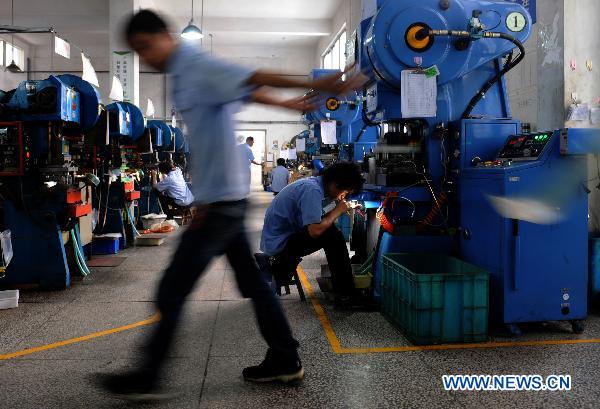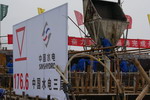China issues growth plan for SMEs
Updated: 2011-09-26 16:29
(Xinhua)
|
|||||||||||
BEIJING -- In face of the severe survival predicaments, China issued its first nation-level special plan for small- and medium-sized enterprises on Sept 22.
 |
|
Workers are seen in a workshop of an electric switch company in Wenzhou, East China's Zhejiang Province, June 30, 2011. [Photo/Xinhua] |
The Growth Plan for SMEs in the 12th Five-Year Program period (2011-2015) was released by the Ministry of Industry and Information Technology at the 8th China International SME Fair held in Guangzhou.
A group of key projects and action plan will be launched, including building the public service platform network and improving SMEs' capacity, according to Zhu Hongren, chief engineer at Ministry of Industry and Information Technology.
According to the plan, the number of China's SMEs will grow steadily in the next five years with an average annual growth rate of 8 percent.
There are five primary missions in the plan. First, to improve the capacity of establishing business and creating jobs; Second, to optimize the structure of SMEs; Third, to boost the development of the "new, distinctive, specialized and sophisticated" industries and the industrial clusters; Fourth, to upgrade enterprise management level; Fifth, to refine the service system of SMEs.
SMEs contribute to 60 percent of China's industrial output and create 80 percent of the country's jobs.
They are experiencing the greatest hardships this year and are at great risk of debt disputes. Shortages of electricity, capital and labor have led them to this predicament, and the soaring costs have made things worse.
Among the 60 small businesses and 10 industry associations interviewed by Xinhua in July in the costal provinces of Zhejiang, Fujian and Guangdong, as many as eight out of ten companies said they are suffering from operating difficulties more than ever before.
Thinner profits have made business owners reluctant to take orders, while a labor shortage, tightened electricity and money supply are impeding production. Many small businesses said they are faced with "the toughest time in the history."
The Chinese government has made substantial efforts to support SMEs while simultaneously tightening its monetary stance to curb inflation this year.
To square the circle of curbing inflation while sustaining economic growth, the central bank and the National Development and Reform Commission have highlighted the necessity of encouraging financial institutions to support small and medium-sized enterprises while controlling total credit.
Hopefully, this newly released growth plan will get SMEs out of the predicaments and help SMEs to establish a modern enterprise system and credit system.
Related Stories
Program to facilitate SME financing 2011-08-19 15:18
Release schedule SME Board 2011-08-17 16:30
7% of SME assets spent on 'relationships' 2010-07-29 10:30
Seven percent of SME assets spent on 'relationships' 2010-07-29 07:44
- China issues growth plan for SMEs
- Sinohydro aims to raise $2.3b in Shanghai IPO
- Draft law for mandated warranties released
- Slower GDP growth in Q4 predicted
- VW again raises stakes with record investment
- Sky's the limit for owners of private jets
- McDonald's licensed for expansion
- Beijing's 2nd-hand home sales drop to 3-yr low













